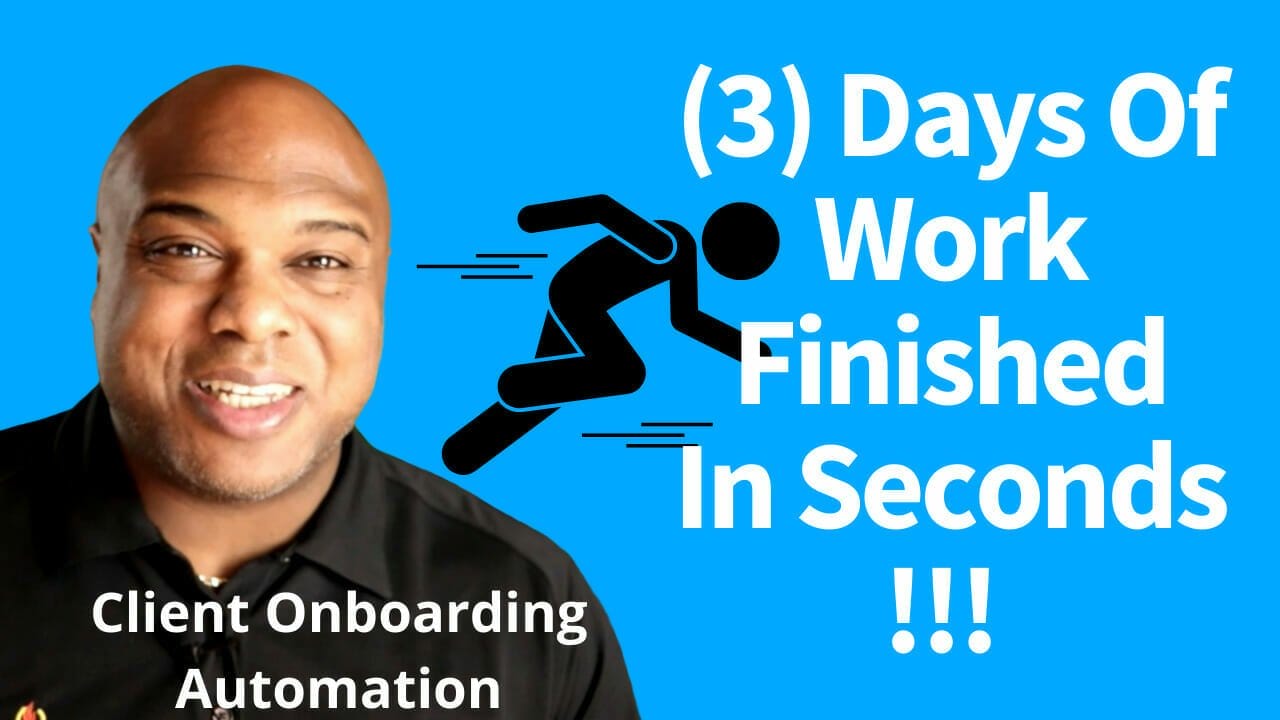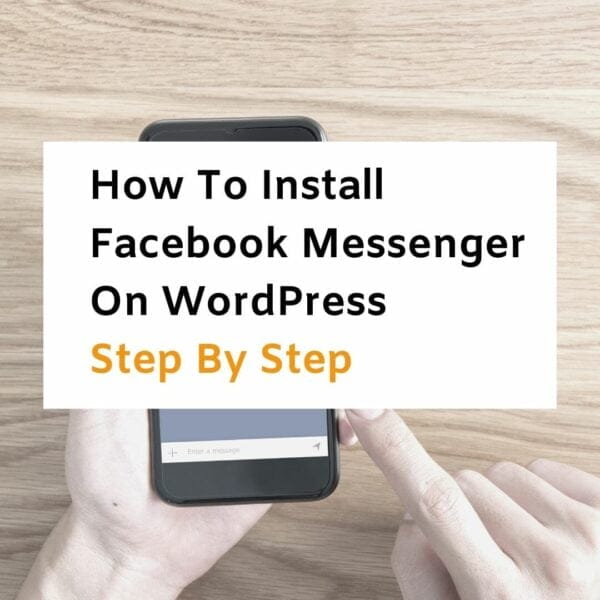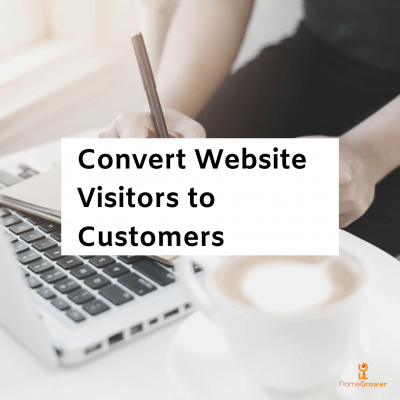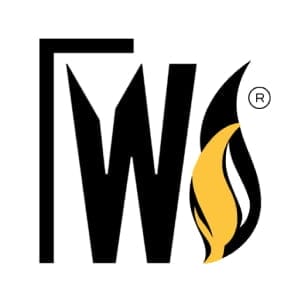Play Video
RPA robotics process automation has taken the business industry by storm. Even smaller shops with less resources can compete with larger businesses if they have the best processes.
In this video I will be covering a simple client onboarding workflow using Pabbly-Connect / Smart Task / Google Forms / Google Sheets / Fresh Proposals.
Full Transcript
00:00
Hey, what’s going on everybody?
00:01
How many of you are collecting data on your website
00:04
and doing absolutely nothing with it?
00:06
Like zilch, zip zero, you have a form on your website,
00:11
you’re collecting name, phone number, email address.
00:14
It can be a Google form, it can be an embedded form
00:17
on your website.
00:18
It could be going to ZOHO or one of those type
00:21
applications and you’re doing absolutely nothing with it.
00:23
This video is for you. All right, Let me bring my
00:27
microphone closer. A microphone too far away.
00:30
So, good audio for this particular video, I’m gonna
00:35
show you some basic workflow automation is that I’ve
00:38
been working on for the last few weeks.
00:40
I’m just going to show you one that’s actually actively in
00:43
development, but this will give you a really good idea of
00:47
what you can do to 10 x 100 x your website and get
00:51
those extra sets of helping hands on your websites.
00:55
Now, before I jump into this video, make sure you go
00:58
ahead and do the thing to like him to subscribe to this
01:00
particular video or this particular
01:02
channel and put your comments below.
01:05
So I know what to talk about next or I can provide you
01:07
some guidance on that next step that you’re going to
01:09
do with your website.
01:10
All right, so let me go ahead and share my screen.
01:13
So
01:17
typically, uh, so this particular
01:19
workflow that I’m doing right now.
01:21
This is for a client onboarding.
01:22
So typically when a client is onboarded, there’s several
01:26
steps that they have to do.
01:27
First you have to collect some information about them.
01:29
Then you have to add it to your project board.
01:31
After you added to your project board, you may have to
01:33
create the agreement.
01:35
Then you may have to send out the building and the
01:37
finances. That’s a whole lot of steps.
01:39
That’s a lot of time. That can take over a day and it can
01:43
take several people to do that.
01:44
And what I’m about to show you, you can condense
01:47
that into a matter of minutes.
01:50
Like literally I kid you not.
01:52
So the form that I have up right now is just a standard
01:56
google doc form.
01:57
So pretty much you have your form, have some, some
02:02
dummy data in here.
02:03
But basically what happens is you fill out your form, it
02:07
could be on your website or a Google doc and then
02:10
that form gets uploaded into a google sheet or which is
02:14
going to be our database for this instance.
02:16
Excuse me. So,
02:21
um the cool thing about today’s technology is that
02:25
everything is a website.
02:27
Everything is a website. Remember back in the day we
02:29
used to download programs and have to install the .exe
02:32
file and get the DVD or the CD and install that app.
02:37
Well everything being a web app allows the developers
02:41
to do some really cool stuff.
02:42
One of the things being, is to
02:44
be able to talk to each other better.
02:46
So, um, some background as I’m just filling out this
02:50
form. So okay, who’s closing the deal?
02:52
What’s today’s date? Today’s date is today? Boom
02:57
clients. First name Donald, last name.
03:01
Duck
03:04
client, email D. D. At the webpage.
03:07
The web page site dot com. Property managed.
03:12
Let’s see uh W W dot D Dot com And legal business
03:17
name Duck inc
03:22
Client business address.
03:23
Let’s say he hangs out with the Sesame Street crew
03:28
and client business city uh New York.
03:31
He has a condo up there
03:36
state and NY. Now,
03:39
all of these files, these form fields that are filling out
03:41
their customizable, completely customizable.
03:43
You can set up however you want in terms of your on
03:46
on on boarding process or your intake process.
03:52
All right. And start date of his project.
03:57
Start projects going to start on Monday and the type of
04:01
project is going to be website design project.
04:03
Alright, when I press submit on this button it’s gonna
04:06
add another line to this form that I have right here.
04:11
So it’s going to capture the data at number 16. There
04:13
was some additional data that was here.
04:15
But I scrubbed the doc so um it’s just gonna proceed
04:18
below that one.
04:18
So let me go ahead, close that
04:21
one and click on submit boom.
04:24
And I go back into this form number 16 dd dot com
04:29
New York NY
04:31
and it has all of the information.
04:32
So on the back end I’m using one of the automation
04:35
tools that is uh similar to Zapier uh It’s called Pabbly
04:40
Connect but that is the brains behind this stuff.
04:42
So what happens is the form of the Google forum
04:47
upload all of this information that I have here and on
04:50
the back end I have Pabbly sitting in the cut just waiting
04:53
for some new information it’s saying yes send me some
04:56
data, send me some data.
04:57
Um So this this triggers
04:58
automatically once every hour or so.
05:01
So if I have a whole bunch of documents it’ll trigger
05:05
within that hour.
05:06
But for the interests of this particular video I’m just
05:09
gonna, we’re not gonna wait an hour.
05:11
I’m going to trigger it manually. The trigger phase Uh or
05:15
field and this one is the p. field.
05:18
So I’m just gonna trigger this I’m just gonna update that
05:21
to random variable.
05:23
You’ll notice right away that once I do that it starts to
05:27
create the the automation and it’s going to read that
05:30
information and it fills the SmartTask which is my
05:34
project tool ID
05:35
And then it also creates the customer agreement so it
05:40
adds an agreement ID.
05:42
And then also it adds an agreement itself. So now we
05:46
have uh an agreement. Pretty awesome stuff.
05:50
So now in the workflow um we
05:55
have an ID that we can look at.
05:57
Um So this is the Mickey deal but the Donald is going
06:01
to be exactly the same way.
06:03
Um In terms of the project tool you can use whatever
06:06
project tool that you want.
06:07
Um that’s the beauty about this modular stuff.
06:09
So like if you have a Click Up or an Asauna or one of
06:13
those type tools that has API
06:15
interface or api technical term.
06:17
Um but an application interface, you
06:19
can send this data straight there.
06:21
Um So yes, I have a task card, you some task um just
06:27
some basic information and um so when when we’re
06:32
going through this process and we’re doing things,
06:35
there’s gonna be some manual stuff.
06:37
So like for instance that partnership agreement that we
06:39
sent off to be created, the agreement is created but we
06:42
don’t send it off yet because we want to review it.
06:44
There may be some uh some typos in the in the names
06:48
on the company name of the business address, we
06:50
want to make sure that that stuff is correct as possible.
06:52
So we allow a manual intervention there so that way
06:55
someone can look through it.
06:56
Um All right, so let
06:57
me go through the workflow real quick.
06:59
I’m trying to keep this thing short and sweet.
07:01
Um I don’t know how short or how sweet is going to be,
07:05
but just to give you guys,
07:07
you know, just a high level understanding.
07:09
So basically what’s happening on the back end, what’s
07:11
under the hood.
07:12
So this is this Pabbly tool I was telling you about.
07:14
So essentially what happens is when someone um
07:17
uploads a new row into that spreadsheet and that can
07:19
be coming from your website again or from that google
07:21
form um do these tasks.
07:23
So the very first thing that we need to do is we need to
07:26
create some variables, have
07:28
them completed, created and completed.
07:30
So one of the variables that we need is today’s date.
07:32
So we everything is is built around today’s date.
07:35
We want to know how long the contract needs to sit out
07:38
there as a task.
07:40
Typically that’s like 24 hours, so that’s 24 hours from
07:43
today’s date, which is why we have this line right here.
07:48
Also we want to know how long the client has to sign
07:51
the agreement to that’s going to be another field that
07:53
goes into that contract when we create the contract.
07:56
So we have a calculation for that and then there’s just
08:00
some basic formatting in there because these tools,
08:02
some of them take the data and UNIX format or or
08:05
whatever format, but just know that the data has to be
08:08
formatted a certain way.
08:09
Okay, so like I’m like super excited about this workflow.
08:12
I know there’s a lot of stuff and I’m going through a lot
08:15
of stages but just think about this, I’m going through
08:18
this workflow and saved almost a day, maybe two days
08:22
worth of work and I did like five minutes.
08:24
How much time are you wasting in your business? We
08:27
definitely need to talk about your website strategy.
08:30
All right, So um next task
08:35
I have is to create that task in Smart Task.
08:38
Um And then this is also for some look up information
08:41
but basically this Smart Task is my project
08:44
management tool so it creates a ticket there.
08:46
Um After it creates a ticket,
08:48
it does it goes back to that Google sheet that we maid
08:51
and it looks up the rows and then it updates that row
08:54
with the Smart Task ID
08:55
And that’s how we got this ID
08:56
That’s the GUID for the ID
08:58
The important part of that is is
09:00
that in future steps that I create?
09:02
I can actually reference that ID
09:04
And I can automatically programmatically move that
09:08
smart the card to a new lane let’s say the client paid.
09:11
I can change the status of the ticket to close or I can
09:15
move it to another swim lane
09:17
to do another step or another process.
09:19
So that’s why we capture the Smart Task ID. All right.
09:22
And I know I’m talking about some technical stuff here.
09:26
Um It’s been a while since I really made a technical
09:28
video but I can’t help myself.
09:29
I’m a tech guy. Um All right.
09:32
So um the next thing that we do after that is we go to
09:37
what’s called a router in in Pabbly land but Zapier may
09:41
call it something different.
09:42
But basically this is your conditional logic. This is your if
09:45
then else statement.
09:46
So what we have here saying and actually there’s
09:50
going to be a bunch of routes
09:50
So this will be one route for each type of agreement
09:53
that we have available.
09:55
So we have here is that says if only continue if
10:04
the contract type is equal to web design.
10:06
If it’s equal to web design then I want you to create the
10:09
client or update this is actually create or update
10:12
field create the client in the proposal software.
10:15
And then I want you to create the proposal with all of
10:20
that client information.
10:21
So this is um this is
10:24
what the proposal name is going to be.
10:26
These are the fields the business name and the
10:27
website, your role in the project and then um due date,
10:34
company name and then contact email.
10:36
And then after that’s all done we’re going to take the
10:40
cell information and update that excuse.
10:42
We’re going to take the information from that
10:44
agreement that was just created and we’re gonna
10:46
upload that into our master database spreadsheet.
10:49
So now we know the contract ID. And then we also
10:52
have the U. R. L. For that contract.
10:55
So if we need to review of that proposal if we want
10:58
want to send it off to another team for review.
11:00
Let’s say we have an internal legal team or even an
11:02
external legal team.
11:03
We can actually add another task and says send email
11:06
and embed that link into the email.
11:08
Really, really cool stuff. Um Anyway.
11:12
Uh This is just a high high level of of these proposals
11:17
and these things that you can do.
11:18
So like another stage of this would be What happens?
11:22
What do you do after the agreement is signed?
11:24
So after the agreement is signed, you can actually um
11:28
send out an invoice automatically via Stripe.
11:31
Or you can create a workspace for them in your
11:34
workspace to let’s say you have a client portal
11:36
application like Honey Book or Dubsado
11:39
Uh or you can take that same information and you can
11:44
do some additional processing whatever the
11:46
processing that you need for your business.
11:48
And then also like once the agreement aside, you may
11:50
have a pdf, you can create another workflow to take
11:52
that pdf and download it automatically into a folder that
11:57
is stored indefinitely in your data repository anyway.
12:01
Really cool stuff. I hope
12:02
you guys enjoyed the video. Again.
12:05
This is Edward here from the web page site dot com.
12:07
We make websites awesome.
12:08
Don’t forget to do the thing to smash that button to like
12:11
him to subscribe to this particular channel.
12:13
Um and then drop your comments in below as well. All
12:16
right, everybody have wonderful week.
12:17
I’m going to continue this series
12:19
at some point in the future.
12:20
Uh If you have anything that you want me to cover in
12:22
detail, just dm me or put it in the comments below.
12:25
All right, I’ll see you all next video








